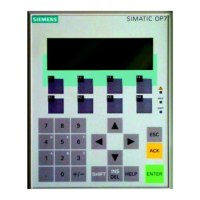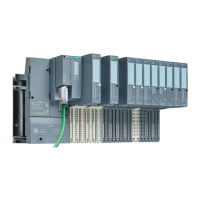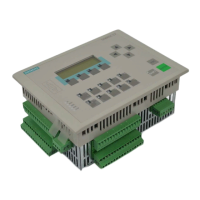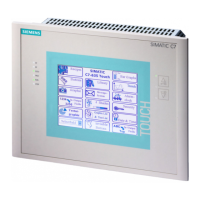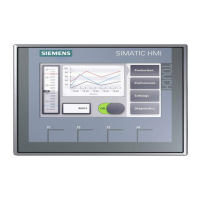I/O: UNIT_NAME If an identifier is specified here, it will be used for subsequent recipe crea‐
tion. If no identifier is specified, the name of the unit folder will be used for
subsequent recipe creation. The reason for this is that the unit folder iden‐
tifiers are frequently subject to a particular name scheme and, therefore, a
freely selectable unit name cannot be used. However, to enable this you
can use this attribute to specify a free name for the unit.
Created by Specification of the application that created the object, either SIMATIC
BATCH PCell Control Center or SIMATIC Manager.
● If a type object was created by SIMATIC Manager, additional subobjects
cannot be added, nor can the selected object be deleted or changed,
either via the PCC API or with the PCC configuration dialog.
● If an instance object was created by SIMATIC Manager, additional
subobjects can be added via the PCC API or with the PCC configuration
dialog. However, it is still not possible to delete or change the selected
object here.
OS Full path to the OS.MCP file (for example, E:\Proj\Mig\Baf\WINCPROJ
\BAF3OS\BAF3OS.mcp or UNC path \\computer_name\share_name\...).
The path is required by the WinCC Archive Browser and can be specified
on the process cell and/or unit object. For all objects, the entry in the first
parent object found applies; this means that if, for example, no specification
is made on a unit, the entry on the process cell object will apply.
Unit
Buttons
Check validity All batch instances, starting with the selected object (a unit, in this case),
are checked for consistency with the batch types and for conformity to
ISA-88. The validity errors and validity warnings are displayed in the log
field and can be visualized using the "Display" button.
Update All batch instances are adapted according to the batch types. This action
is always required if a change has been made to batch types of existing
batch instances (e.g., inserting a new parameter, changing the unit of
measure, etc.).
New A new subobject is created below the selected "Unit" object. The possible
object types are offered in the subsequent dialog "Insert" for selection.
Delete The unit object can be deleted here. Deletion is only possible if the selected
object is not in use.
Log
"Errors" display field The number of errors for the selected log is displayed.
"Warnings" display field The number of warnings for the selected log is displayed.
"Display" button The logging is activated with the "Display" button. The selected log is
generated as an XML file in the specified layout and displayed in In‐
ternet Explorer.
Select "Process cell" and click the "Display" button to show all process
cell errors or warnings. You can also right-click a selected object and
select the "Display log" function to display object-specific errors or
warnings.
Context help references
14.1 Dialogs
SIMATIC BATCH V8.2
1016 Operating Manual, 02/2016, A5E35958174-AA

